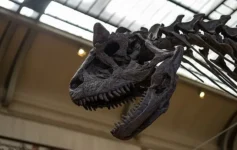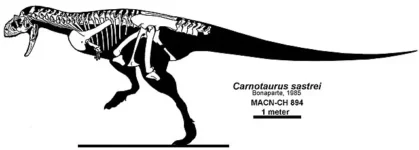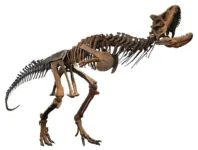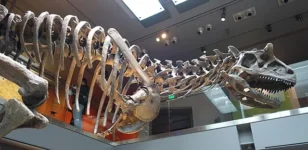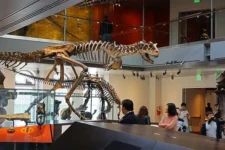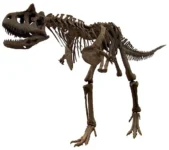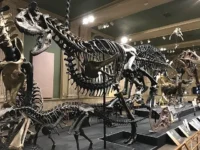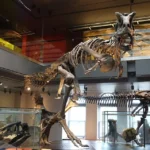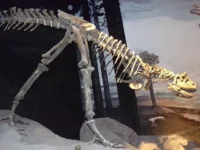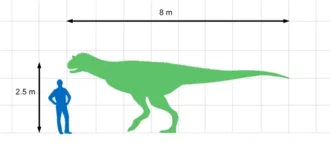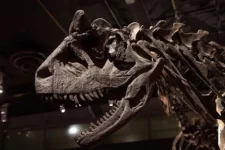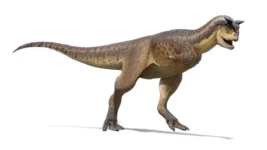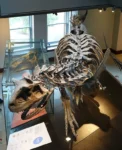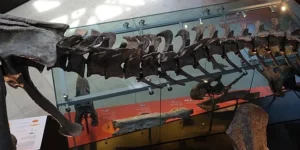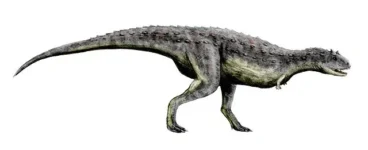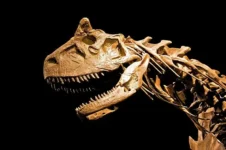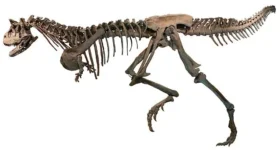Carnotaurus
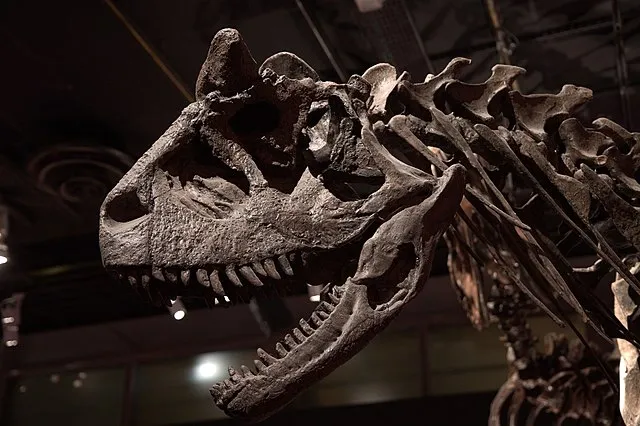
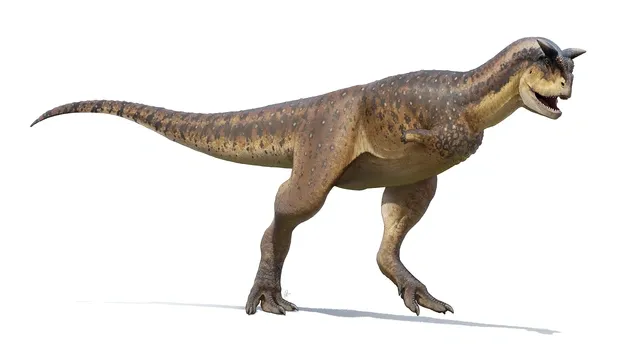
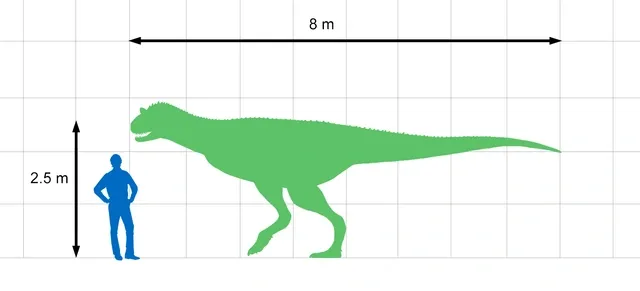
CARNOTAURUS
Carnotaurus was a distinctive theropod dinosaur that lived during the late Cretaceous period, approximately 72 to 69 million years ago. Carnotaurus is important in paleontology due to its unique features, including its horned skull and short arms. It belongs to a group of theropods known as abelisaurids, which were predominantly found in Gondwana during the Cretaceous period. Studying Carnotaurus helps scientists understand the diversity and evolution of theropod dinosaurs in different regions of the world. Here are some key details about Carnotaurus:
SIZE AND ANATOMY:
- Size: Carnotaurus was a medium-sized dinosaur, reaching lengths of about 26 to 30 feet (8 to 9 meters) and standing around 10 feet (3 meters) tall at the hips.
- Weight: It weighed around 1.5 to 2 tons.
- Skull and Horns: One of the most striking features of Carnotaurus was its deep skull with two prominent horns above its eyes, giving it a bull-like appearance. These horns were likely used for display or combat within its own species.
- Body Structure: It had a compact body with strong, muscular limbs and a short tail. Its arms were unusually short even for a theropod, with just two fingers on each hand.
- Skin Impressions: Fossils of Carnotaurus have preserved evidence of its skin, which was covered in small, bumpy scales known as osteoderms.
BEHAVIOR AND ECOLOGY
- Diet: Carnotaurus was a carnivore, specializing in hunting other dinosaurs. Its robust jaws and sharp teeth suggest it was well-adapted for eating large prey.
- Speed: It was a fast runner, capable of reaching speeds estimated at around 25 to 30 mph (40 to 48 km/h). This speed would have made it an agile predator, able to chase down its prey.
- Habitat: Carnotaurus lived in what is now South America, particularly in Argentina, which was part of the southern supercontinent Gondwana during the late Cretaceous.
FOSSILS AND DISCOVERY
- First Discovery: The first Carnotaurus fossils were discovered in 1984 in Argentina by paleontologist José Bonaparte. The discovery included a remarkably well-preserved skull, which provided valuable insights into its anatomy.
- Significant Finds: Additional fossils, including more complete skeletons and skin impressions, have been found in Patagonia, Argentina, contributing to our understanding of its physical characteristics and behavior.
CLASSIFICATION
- Order: Saurischia
- Suborder: Theropoda
- Family: Abelisauridae
- Genus: Carnotaurus
- Species: The type species is Carnotaurus sastrei.
FUN FACTS:
- Name Meaning: The name Carnotaurus means “meat-eating bull,” derived from Latin and Greek roots, reflecting its bull-like horns and carnivorous diet.
- Unusual Arms: Carnotaurus had some of the shortest arms relative to body size among theropod dinosaurs. Its arms were reduced to just two fingers, possibly indicating a specialized adaptation related to its hunting strategy or lifestyle.
- Possible Display Function: The horns of Carnotaurus were likely used for display purposes rather than combat. They may have been brightly colored or used in visual communication during mating displays or territory disputes.
- Skin Impressions: Fossils of Carnotaurus have provided rare insights into the texture of dinosaur skin. The presence of small, bumpy osteoderms suggests it had a textured appearance, different from the scales seen in many other theropods.
